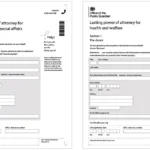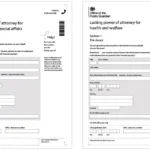The role of Assistant U.S. Attorneys (AUSAs) is crucial in the functioning of the United States legal system. These attorneys serve as prosecutors for the federal government, working under the direction of the U.S. Attorney in a given district. Assistant U.S. Attorneys are involved in a broad range of legal work, including criminal prosecution, civil litigation, and representing the government in appeals. While the number of Assistant U.S. Attorneys across the country can vary depending on the size of the judicial district, staffing levels, and other factors, it’s essential to understand the structure and scale of these positions within the U.S. Attorney’s Office.
What is an Assistant U.S. Attorney?
An Assistant U.S. Attorney (AUSA) is a lawyer who works within a U.S. Attorney’s Office, handling cases on behalf of the federal government. AUSAs are assigned various duties, depending on their area of expertise and the needs of the district. Some may focus on prosecuting criminal cases, while others work on civil cases, managing disputes involving the federal government.
Assistant U.S. Attorneys play a central role in the American justice system, representing the federal government in both the criminal and civil arenas. They work on some of the most complex and high-stakes cases, from drug trafficking to terrorism and national security cases, as well as civil rights and environmental litigation.
How Many Assistant U.S. Attorneys Are There Nationwide?
The number of Assistant U.S. Attorneys in the United States varies significantly based on the jurisdiction and the caseload of each U.S. Attorney’s Office. In general, there are several thousand AUSAs serving across the country. As of recent years, the total number of Assistant U.S. Attorneys is estimated to be between 5,000 and 7,000 nationwide.
This estimate includes those who work in the 94 U.S. Districts across the country, as well as U.S. territories such as Puerto Rico, the U.S. Virgin Islands, and Guam. Since there are 94 U.S. Attorneys, each district has one U.S. Attorney, with a varying number of Assistant U.S. Attorneys working under them. Some districts with larger populations or higher caseloads may have many more AUSAs compared to districts with smaller populations.
For example, major districts like the Southern District of New York (SDNY) or the District of Columbia may have a higher concentration of AUSAs due to the large volume of cases handled in these jurisdictions. On the other hand, smaller districts or those in more rural areas may have fewer Assistant U.S. Attorneys.
Why is the Number of Assistant U.S. Attorneys So Variable?
Several factors contribute to the variation in the number of Assistant U.S. Attorneys across different districts. These factors include:
- Caseload:
Districts with higher crime rates or a greater number of federal cases often require more Assistant U.S. Attorneys. For example, districts like SDNY, the Northern District of California (NDCA), or the Southern District of California (SDCA) handle complex financial crimes, organized crime, and immigration cases, requiring more personnel. - Size and Population of the District:
Larger districts or those with significant populations, like California, New York, and Texas, tend to have more AUSAs to manage the volume of federal cases. In contrast, smaller districts may require fewer attorneys. - Specialization Areas:
Some districts may require more Assistant U.S. Attorneys specializing in certain areas, such as cybercrimes, terrorism, or drug offenses. Certain regions may focus on a particular issue, increasing the need for specialists within the office. - District Complexity and Resources:
Major cities with large legal infrastructures, such as Chicago, Los Angeles, and Washington D.C., tend to have more AUSAs because the district’s legal complexity and resources enable the hiring of a larger staff to handle the caseload.
Assistant U.S. Attorneys’ Roles and Specializations
The work of an Assistant U.S. Attorney varies greatly depending on the district and the type of cases they handle. Below are some of the most common specializations within the role of an AUSA:
- Criminal Prosecution:
- Drug Crimes:
AUSAs often handle cases involving the distribution or trafficking of illegal substances. These cases can include organized drug cartels, international drug trade, or local drug-related offenses. - White-Collar Crime:
Another key area of criminal prosecution handled by AUSAs involves white-collar crimes such as fraud, embezzlement, money laundering, and corporate crimes. - Organized Crime:
Some AUSAs specialize in prosecuting cases related to gangs, mafia organizations, and terrorist groups. - Immigration Crimes:
AUSAs may also handle cases of immigration fraud, human trafficking, or criminal violations related to immigration laws.
- Drug Crimes:
- Civil Litigation:
- AUSAs represent the federal government in civil matters, which could include contract disputes, environmental regulations, civil rights violations, and more. They may handle cases where the government is either defending itself against lawsuits or pursuing legal action for violations of federal law.
- Appellate Work:
- In addition to prosecuting cases, AUSAs may work on appeals in both criminal and civil matters. They help represent the government in appellate courts, arguing why a decision made by a district court should be upheld or overturned.
Assistant U.S. Attorney Salaries
Salaries for Assistant U.S. Attorneys vary depending on experience, location, and the level of responsibility. In general, the salary range for an AUSA can range from $50,000 to over $150,000 per year. The exact salary often depends on the level of experience of the attorney, the district they are assigned to, and whether they have any specialized skills or experience.
For example, AUSAs working in large cities like New York or Los Angeles may earn higher salaries due to the cost of living and the complexity of the cases they handle. In contrast, AUSAs in smaller districts with lower costs of living may earn less, though they still receive competitive pay for federal positions.
Training and Qualifications to Become an Assistant U.S. Attorney
Becoming an Assistant U.S. Attorney requires a significant level of education, experience, and training. The following steps are typically involved:
- Educational Requirements:
- AUSAs must have completed a law degree (J.D.) from an accredited law school. In addition, they must be licensed to practice law in their district.
- Experience:
Most AUSAs have several years of legal experience, often working as trial attorneys, prosecutors, or clerking for judges. Some may have backgrounds in private practice or as public defenders. - Application Process:
U.S. Attorney’s Offices typically post open AUSA positions, and applicants are required to undergo a rigorous hiring process, including interviews and background checks. - Training:
Once hired, Assistant U.S. Attorneys undergo training on federal law and the procedures specific to the U.S. Attorney’s Office.
How the Number of Assistant U.S. Attorneys Affects Their Workload
The number of AUSAs assigned to a district plays a direct role in the workload of each attorney. In districts with more AUSAs, workloads may be more evenly distributed. However, in districts with fewer AUSAs, individual attorneys may be required to handle a larger number of cases, which can increase the stress and demands placed on them.
Despite these challenges, AUSAs are committed to ensuring the fair and effective prosecution of federal cases. Many AUSAs find their work rewarding because it allows them to uphold the rule of law, serve the public, and protect federal interests.
The number of Assistant U.S. Attorneys nationwide is substantial, with several thousand AUSAs working across the country in various districts. Each district’s caseload, population, and specialization needs directly impact how many AUSAs are required, creating a dynamic workforce dedicated to representing the federal government in critical legal matters.
















